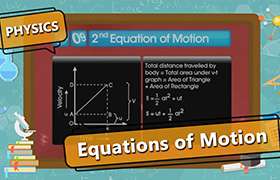CBSE Class 9 Answered
There are a number of orbitals, with 4 different types of sub-shells, they are arranged like this:
Orbital 1 - s1
Orbital 2 - s2 & p2
Orbital 3 - s3 & p3 & d3
Orbital 4 - s4 & p4 & d4
Orbital 5 - s5 & p5 & d5
Orbital 6 - s6 & p6 & d6 & f6
Orbital 7 - s7 & p7 & d7 & f7
And that's the limit of them right now, they'll probably make bigger atoms in the future.
Each of those different sub-shells have different energies of electrons associated with them. These sub-shells can be divided again into even smaller, sub-sub-shells, take the p2 sub-shell for instance, it can be divided into p2x, p2y & p2z. Each of these can hold two electrons, but when two electrons share one of these sub-sub-shells they need to be of a higher energy, so the order in which they fill up may be like this:
p2x(0) p2y(0) p2z(0) - p2(0)
p2x(1) p2y(0) p2z(0) - p2(1)
p2x(1) p2y(1) p2z(0) - p2(2)
p2x(1) p2y(1) p2z(1) - p2(3)
p2x(2) p2y(1) p2z(1) - p2(4)
p2x(2) p2y(2) p2z(1) - p2(5)
p2x(2) p2y(2) p2z(2) - p2(6)
The s sub-shells contain only 1 sub-sub-shell, the p sub-shells contain 3, the d 5 and the f 7.
It gets a little complicated around the d3 area though, because the d3 electrons are of a higher energy than the s4 electrons and so the s4 sub-shell fills up first, however when electrons are removed (ie: for ionisation), it is the s4 electrons which are removed first.
It is handy to think of sub-sub-shells as spheres, where the very first sub-sub-shell (s1) is a sphere surrounding the nucleus, the second sub-sub-shell (s2) is a slightly larger sphere surrounding the first. Then comes the first of p sub-shells (p2) also in the 2nd orbital, this consists of 6 spheres, each one a half of a sub-sub-shell, there are therefore three pairs of spheres, they are called p2x, p2y & p2z. I don't even want to begin describing what the d and f orbitals look like.
Of course, in truth, these sub-sub-shells are not always spheres, especially when you start looking at the f and high d orbitals, their probability surfaces change as the orbitals interact with each other. I say probability surfaces because that's what they are, they are usually 90% probability surfaces, they enclose a volume for which it is expected that the electrons in their orbitals spend most of their time.
So the general rule is that, the higher up an electron is in the atom/ion, the higher the sub-sub-shell it is in, and therefore the more energy it has, and therefore the easier it is to ionise it because you need to supply it with less energy.
regards
toppers expert











